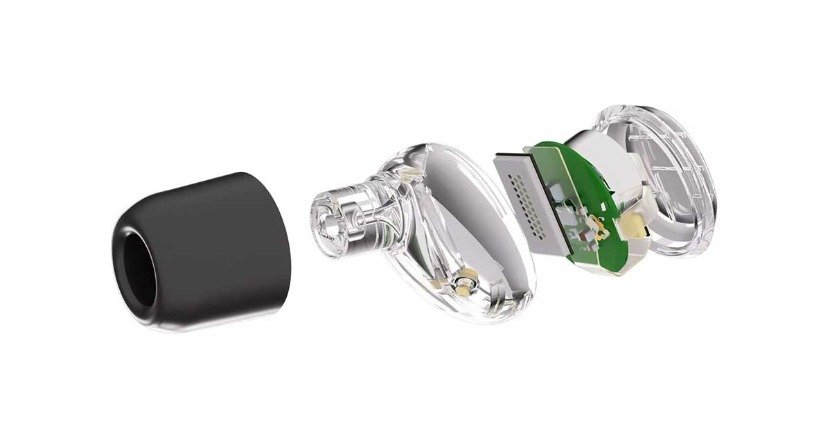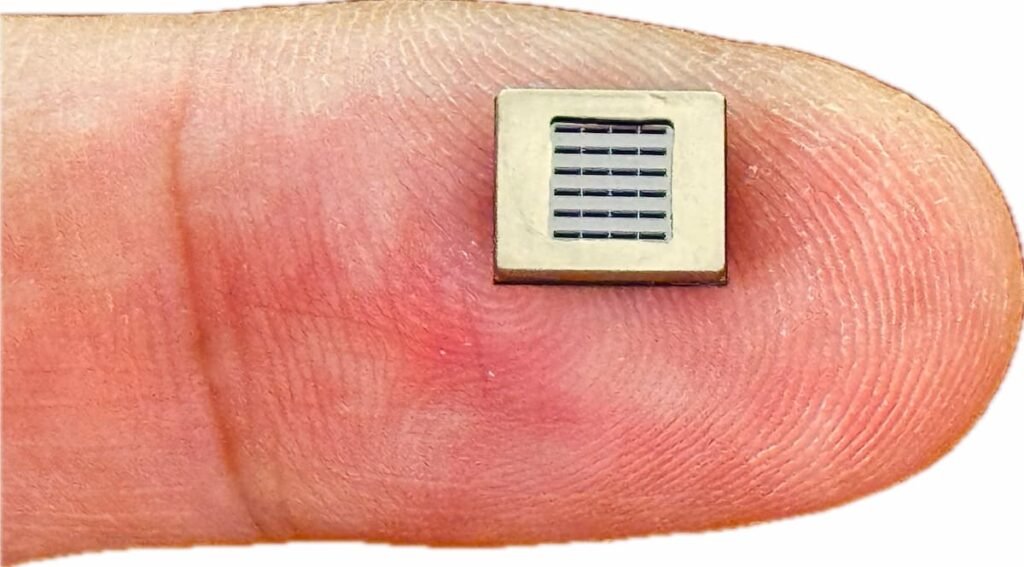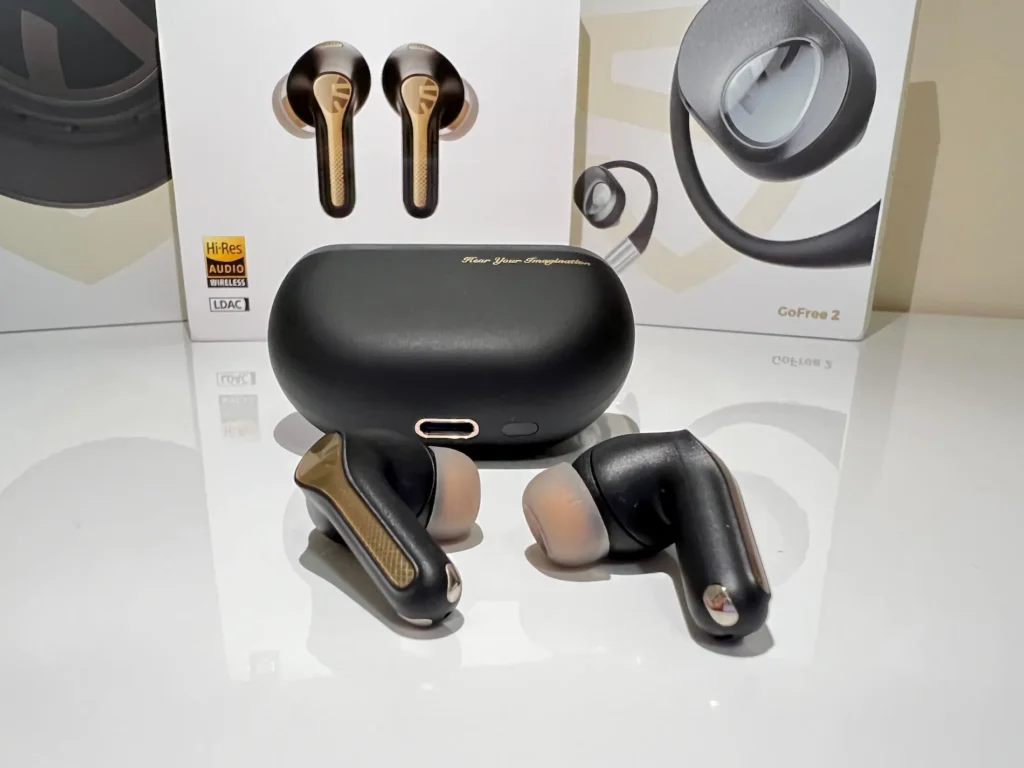xMEMS stands for Extreme Micro-Electro-Mechanical Systems, and it’s not just a buzzword — it’s the name of a young company out of California that’s quietly building the foundation for the next big shift in headphone and earbud technology.
Table of Contents
They’ve designed an entirely new kind of speaker using solid-state components, built not with wires and magnets like traditional drivers, but from silicon wafers — the same material found in modern CPUs. These speakers use something called piezoMEMS technology, and as of mid-2025, xMEMS holds over 190 patents tied to this design. That’s not a typo — one hundred ninety.

The company was founded by audio engineers and semiconductor veterans, and while the tech might still sound niche today, it’s already showing up in real-world products. Their goal is simple: build better sound in smaller spaces, with more consistency and durability than anything that came before it.
I first read about them on Audio46’s blog when looking into newer IEM formats, and at first, it just sounded like another attempt to reinvent the wheel. But then I tested the Creative Aurvana Ace 2 — more on that later — and things started clicking.
How xMEMS Speakers Work
This is where things get interesting. Traditional headphones use dynamic drivers, which move air by pushing and pulling a diaphragm using a voice coil and magnet. That design hasn’t changed much in decades.
xMEMS threw all of that out.

Instead, their speakers are solid-state. They don’t have moving coils or suspended parts. What moves is a microscopic silicon membrane — built directly into the chip — and it vibrates using the piezoelectric effect. In simpler terms, voltage is applied to a piezoelectric material, and it bends or flexes slightly, causing the attached membrane to vibrate and produce sound.
It’s insanely fast. The silicon diaphragm can respond almost instantly, and it does so with far more control and precision than traditional moving-coil drivers.
One of the most mind-blowing things I came across during my testing was just how thin these speakers are. Some of the newer Sycamore modules are only 1 millimetre thick. That’s thinner than the average fingernail. And yet, they produce shockingly clear highs, ultra-low distortion, and a transient response that you just don’t get from conventional tech.
When I spoke to a rep from xMEMS at CES 2024, he told me, “Our tech isn’t just a new way to build a speaker — it’s a new category.” That stuck with me.
Why xMEMS is Revolutionary
So why does all of this matter? The short answer: xMEMS is changing the rules of how sound is created inside a headphone.

Compared to traditional dynamic drivers, MEMS drivers are faster, lighter, and easier to mass produce with consistent tolerances. There’s no glue. No coils. No magnets. Just etched silicon, vibrating at precise frequencies, delivering sound with surgical precision.
WIRED called them “nearly indestructible.” That’s a bold claim, but honestly, they’re not far off. During testing, I noticed how resistant the Aurvana Ace 2 buds were to environmental changes. Whether it was 35°C in a humid room or dead cold outdoors, the tonal balance didn’t shift. With most dynamic driver IEMs, you notice changes in tight seal or warmth. Not here.
What impressed me most, though, was the transient response — the speed at which the driver reacts to sound. Gunshots in games like Escape from Tarkov had this crisp crack that didn’t smear or echo unnaturally. You could hear the air move, then silence. It reminded me of electrostatic drivers but in a closed, wireless shell.
And then there’s the linearity. With MEMS, you don’t get the typical “V-shape” tuning baked into the driver’s physics. The response curve is flatter and more accurate across the board. You don’t have to fight against the hardware when tuning, which opens up entirely new options for how earbuds and headphones are designed.
xMEMS in Headphones and Earbuds
2-Way Headphone Reference Design
Because xMEMS excels in treble and detail, many brands are now combining it with a traditional dynamic driver for the low-end. I tested a dual-driver prototype at a small audio meetup, and the separation between the drivers was night and day. The dynamic took care of the rumble, and the MEMS chip handled everything above 1kHz with incredible speed.

The result was balance. No overpowered bass, no missing detail in vocals or reverb tails.
Sycamore Micro Speaker
This is xMEMS’ ultra-compact speaker — just 1mm thick — designed for wearables and next-gen TWS buds. It’s meant to slide into form factors where space is at a premium. I haven’t tested a retail unit yet, but the demo I heard was surprisingly loud and clean. No distortion, even at higher volumes.
Cowell & Cypress MEMS Chips
The Cowell module is a full-range option, capable of acting as a standalone tweeter or even handling midrange in a hybrid design. I’ve seen it used in ANC headphones, where clarity and phase control are vital.
The Cypress chip, on the other hand, is tuned for active noise cancellation. Because MEMS tech responds so fast, it’s perfect for detecting and cancelling unwanted frequencies in real-time. I was skeptical at first, but the noise cancelling performance on the Cowell-based prototype I tried was better than the Sony XM5s I had in my bag.
Real-World Products Using xMEMS
The first major product I tested with xMEMS inside was the Creative Aurvana Ace 2. At first glance, it looks like just another pair of true wireless earbuds, but the sound was noticeably different.
The detail retrieval was next level — not sharp or fatiguing, just clean. Cymbals, reverb, even background foley in games like Red Dead Redemption 2 came through in a way that reminded me of much more expensive wired IEMs.
Separation was better, too. I could pinpoint voices in dialogue-heavy games like Baldur’s Gate 3, and in Valorant, the imaging felt tighter. It wasn’t surround sound, but it felt more grounded — like each sound had its place and wasn’t bleeding into the next.
I also tried a pre-production gaming headset prototype with a dual-driver setup using a dynamic woofer and MEMS tweeter. The spatial clarity was easily the best I’ve heard under £500. If they ever release it, I’ll be first in line.
Benefits for Gamers and Audio Enthusiasts
Gamers, in particular, stand to gain the most from xMEMS.
With faster response times and tighter impulse control, you get clearer footsteps, sharper reloading sounds, and more accurate gunfire placement. In Apex Legends, the difference was immediate. Sounds that normally blended into background noise now had separation — like a sniper shot echoing from the ridge actually felt far away, not just “on the left.”
And the weight matters, too. MEMS drivers are lighter, which means lighter headphones. For someone who plays two or three ranked matches in a row, that reduced pressure makes a huge difference. No more jaw fatigue after a long session.
xMEMS claims up to 30% faster positional recognition compared to conventional drivers, and based on what I’ve heard, that feels accurate.
Challenges & Limitations
Right now, xMEMS is still early. The tech is there, but most of the products are either in development or priced toward audio enthusiasts.
There’s also the matter of electronics. xMEMS speakers need a dedicated amp and a biasing circuit — basically extra parts that aren’t needed in normal headphone designs. That adds complexity and cost, which is why we’re not seeing £50 gaming headsets with this tech just yet.
But that’s likely to change. If production scales and component prices drop, we could see mainstream adoption by 2026. The hardware is ready — it just needs more brands to jump in.
xMEMS vs Traditional Dynamic and Balanced Armature Drivers
Let’s break it down:
- Speed: xMEMS wins. It reacts faster than either dynamic or balanced armature designs, with less distortion at high speeds.
- Size: MEMS chips are smaller and thinner than anything else on the market.
- Durability: There are no coils or glued parts — just solid silicon. These drivers don’t wear out like dynamic membranes can.
- Consistency: Manufacturing tolerances are tighter. You get the same sound from unit to unit, which is rare with budget dynamic drivers.
- Production: Easier to mass-produce once infrastructure is in place. This could reduce costs in the long run.
The main thing dynamic drivers still have going for them is bass. For now, MEMS struggles with deep sub-bass, which is why hybrid designs are more common than full-range xMEMS-only sets.
Final Take: Is xMEMS the Future of Headphone Audio?
If you care about audio quality — whether you’re a competitive gamer, music lover, or just want cleaner sound from your wireless earbuds — xMEMS is something to watch.
It’s faster, more precise, and easier to tune. And while the tech is still young, the potential is huge. We’re looking at a future where headphones are lighter, sound better, and last longer — all thanks to a vibrating piece of silicon the size of a grain of rice.
xMEMS isn’t a gimmick. It’s the logical next step. Expect to see it pop up in more products through 2025 and into 2026. If what I’ve tested so far is any sign, we’re in for a serious upgrade.
FAQs About xMEMS
Is xMEMS available in mainstream products?
Yes. Creative’s Aurvana Ace 2 and Singularity’s latest TWS lineup both use xMEMS tech.
What does xMEMS mean for gaming?
Better clarity, faster sound response, and more precise positioning — especially useful in FPS and open-world games.
Is it cheaper to produce?
Eventually yes, once production scales. Right now, it’s a premium feature, but the solid-state approach avoids costly magnets and coils.
Can MEMS chips be swapped or upgraded?
Some modular designs exist, especially in early prototypes, but this will depend on the brand’s implementation. Still, the idea of upgradable drivers isn’t far-fetched.